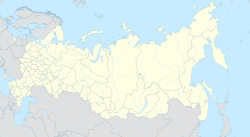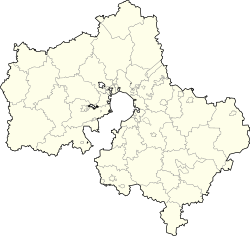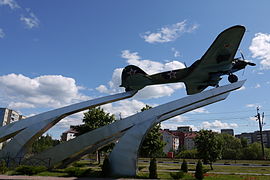
Pavlovo-Posadsky District is an administrative and municipal district (raion), one of the thirty-six in Moscow Oblast, Russia. It is located in the east of the oblast. The area of the district is 566.34 square kilometers (218.67 sq mi). Its administrative center is the town of Pavlovsky Posad. Population: 83,520 ; 102,311 (2002 Census); 40,173 (1989 Soviet census). The population of Pavlovsky Posad accounts for 76.3% of the district's total population.

Protvino is a town in Moscow Oblast, Russia, located about 100 kilometers (62 mi) south of Moscow and 15 kilometers (9.3 mi) west of Serpukhov, on the left bank of the Protva River. Population: 37,308 (2010 Census); 36,175 (2002 Census); 34,520 (1989 Soviet census).

Dmitrov is a town and the administrative center of Dmitrovsky District in Moscow Oblast, Russia, located 65 kilometers (40 mi) to the north of Moscow on the Yakhroma River and the Moscow Canal. Population: 65,574 (2021 Census); 61,305 (2010 Census); 62,219 (2002 Census); 65,237 (1989 Soviet census).

Lytkarino is a town in Moscow Oblast, Russia, located on the left bank of the Moskva River 6 kilometers (3.7 mi) southeast of Moscow. Population: 65,212 (2021 Census); 55,237 (2010 Census); 50,798 (2002 Census); 50,968 (1989 Soviet census).
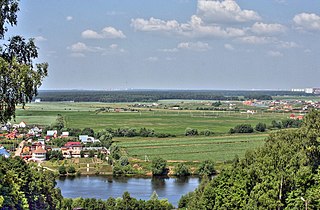
Ramensky District is an administrative and municipal district (raion), one of the thirty-six in Moscow Oblast, Russia. It is located in the southeastern central part of the oblast. The area of the district is 1,397.46 square kilometers (539.56 sq mi). Its administrative center is the town of Ramenskoye. Population: 256,375 ; 217,939 (2002 Census); 153,215 (1989 Soviet census). The population of Ramenskoye accounts for 66.2% of the district's total population.

Chekhovsky District is an administrative and municipal district (raion), one of the thirty-six in Moscow Oblast, Russia. It is located in the south of the oblast. The area of the district is 865.85 square kilometers (334.31 sq mi). Its administrative center is the town of Chekhov. Population: 115,301 (2010 Census); 109,668 ; 39,448 (1989 Soviet census). The population of Chekhov accounts for 52.7% of the district's total population.
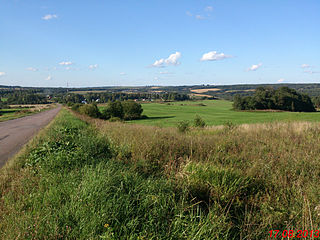
Dmitrovsky District is an administrative and municipal district (raion), one of the thirty-six in Moscow Oblast, Russia. It is located in the north of the oblast and borders with Tver Oblast in the northwest, Klinsky District in the west, Solnechnogorsky District in the southwest, Taldomsky District in the north, Sergiyevo-Posadsky District in the east, Pushkinsky District in the southeast, and with Mytishchinsky District in the south. The area of the district is 2,182.02 square kilometers (842.48 sq mi). Its administrative center is the town of Dmitrov. Population: 151,448 (2010 Census); 149,793 ; 92,080 (1989 Soviet census). The population of Dmitrov accounts for 40.5% of the district's total population.

Klinsky District is an administrative and municipal district (raion), one of the thirty-six in Moscow Oblast, Russia. It is located in the northwest of the oblast and borders with Tver Oblast in the north, Lotoshinsky District in the northwest, Volokolamsky District in the west, Istrinsky District in the south, Solnechnogorsky District in the southeast, and with Dmitrovsky District in the east. The area of the district is 2,019.62 square kilometers (779.78 sq mi). Its administrative center is the town of Klin. Population: 127,779 (2010 Census); 127,938 ; 48,658 (1989 Soviet census). The population of Klin accounts for 63.1% of the district's total population.

Leninsky District is an administrative and municipal district (raion), one of the thirty-six in Moscow Oblast, Russia. It is located in the center of the oblast just south of the federal city of Moscow. The area of the district is 202.83 square kilometers (78.31 sq mi). Its administrative center is the town of Vidnoye. Population: 172,171 (2010 Census); 145,251 ; 74,490 (1989 Soviet census). The population of Vidnoye accounts for 33.0% of the district's total population.

Lotoshinsky District is an administrative and municipal district (raion), one of the thirty-six in Moscow Oblast, Russia. It is located in the northwest of the oblast and borders with Tver Oblast in the north and west, Volokolamsky District in the southeast, Shakhovskoy District in the southwest, and with Klinsky District in the east. The area of the district is 979.57 square kilometers (378.21 sq mi). Its administrative center is the urban locality of Lotoshino. Population: 17,859 ; 18,337 (2002 Census); 18,290 (1989 Soviet census). The population of Lotoshino accounts for 31.1% of the district's total population.

Mozhaysky District is an administrative and municipal district (raion), one of the thirty-six in Moscow Oblast, Russia. It is located in the west of the oblast and borders with Smolensk Oblast in the west, Kaluga Oblast in the south, Shakhovskoy District in the north, Volokolamsky District in the northeast, Ruzsky District in the east, and with Naro-Fominsky District in the southeast. The area of the district is 2,627.28 square kilometers (1,014.40 sq mi). Its administrative center is the town of Mozhaysk. Population: 72,745 ; 70,303 (2002 Census); 42,593 (1989 Soviet census). The population of Mozhaysk accounts for 43.1% of the district's total population.

Noginsky District is an administrative and municipal district (raion), one of the thirty-six in Moscow Oblast, Russia. It is located in the east of the oblast. The area of the district is 893.90 square kilometers (345.14 sq mi). Its administrative center is the town of Noginsk. As of the 2010 Census, the total population of the district was 203,609, with the population of Noginsk accounting for 49.1% of that number.

Ruzsky District is an administrative and municipal district (raion), one of the thirty-six in Moscow Oblast, Russia. It is located in the west of the oblast. The area of the district is 1,567.56 square kilometers (605.24 sq mi). Its administrative center is the town of Ruza. Population: 61,673 ; 63,685 (2002 Census); 67,533 (1989 Soviet census). The population of Ruza accounts for 21.9% of the district's total population.
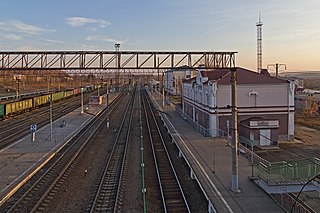
Serebryano-Prudsky District is an administrative and municipal district (raion), one of the thirty-six in Moscow Oblast, Russia. It is located in the south of the oblast. The area of the district is 877.38 square kilometers (338.76 sq mi). Its administrative center is the urban locality of Serebryanye Prudy. Population: 25,843 ; 24,689 (2002 Census); 24,415 (1989 Soviet census). The population of Serebryanye Prudy accounts for 37.6% of the district's total population.

Shchyolkovsky District is an administrative and municipal district (raion), one of the thirty-six in Moscow Oblast, Russia. It is located in the northeast of the oblast. The area of the district is 704.88 square kilometers (272.16 sq mi). Its administrative center is the city of Shchyolkovo. Population: 193,629 ; 211,560 (2002 Census); 101,216 (1989 Soviet census). The population of Shchyolkovo accounts for 57.0% of the district's total population.

Stupinsky District is an administrative and municipal district (raion), one of the thirty-six in Moscow Oblast, Russia. It is located in the south of the oblast. The area of the district is 1,707.73 square kilometers (659.36 sq mi). Its administrative center is the town of Stupino. Population: 119,282 ; 116,007 (2002 Census); 49,439 (1989 Soviet census). The population of Stupino accounts for 56.0% of the district's total population.

Taldomsky District was an administrative and municipal district (raion) in Moscow Oblast, Russia. At 2019, it was located in the north of the oblast and bordered with Tver Oblast in the north, Vladimir Oblast in the northeast, and with Dmitrovsky and Sergiyevo-Posadsky Districts in the south and west. The area of the district is 1,340.52 square kilometers (517.58 sq mi). Its administrative center is the town of Taldom. Population: 48,553 ; 46,302 (2002 Census); 52,619 (1989 Soviet census). As of 2010, the population of Taldom accounted for 28.5% of the district's total population.

Voskresensky District is an administrative and municipal district (raion), one of the thirty-six in Moscow Oblast, Russia. It is located in the east of the oblast. The area of the district is 812.480 square kilometers (313.700 sq mi). Its administrative center is the town of Voskresensk. Population: 153,600 ; 152,761 (2002 Census); 77,573 (1989 Soviet census). The population of Voskresensk accounts for 59.5% of the district's total population.
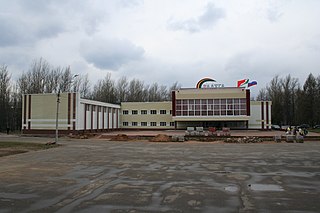
Krasnozavodsk is a town in Sergiyevo-Posadsky District of Moscow Oblast, Russia, located on the Kunya River 88 kilometers (55 mi) northeast of Moscow and 15 kilometers (9.3 mi) north of Sergiyev Posad, the administrative center of the district. Population: 13,392 (2010 Census); 13,549 (2002 Census); 29,786 (1989 Soviet census).

Zaprudnya is an urban locality under the administrative jurisdiction of the town of oblast significance of Taldom in Moscow Oblast, Russia. As a municipal division, Zaprudnya, together with the town of Taldom, another two urban-type settlements, and a number of rural localities is incorporated as Taldom Urban Okrug. Population: 12,855 (2010 Census); 12,621 (2002 Census); 14,457 (1989 Soviet census).




